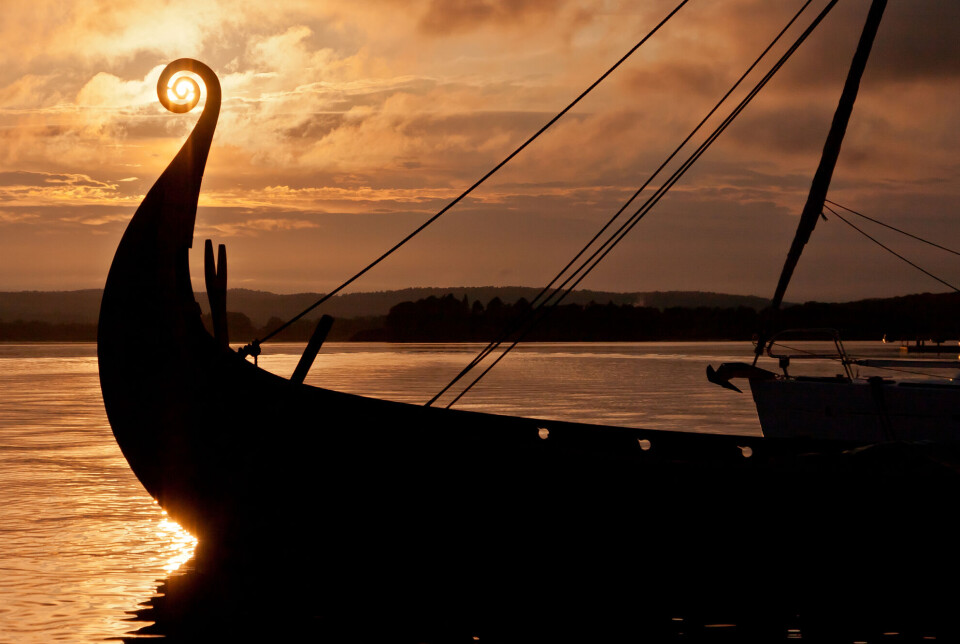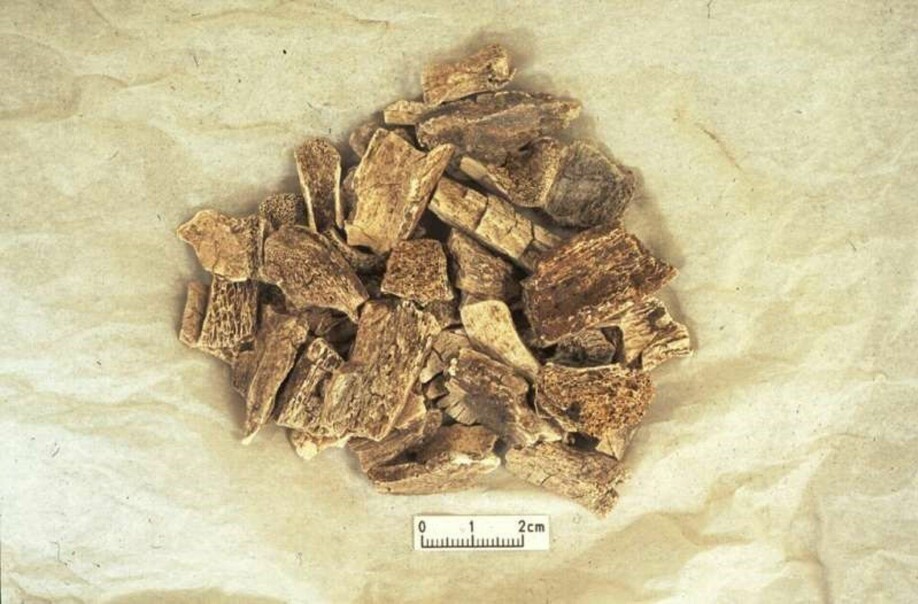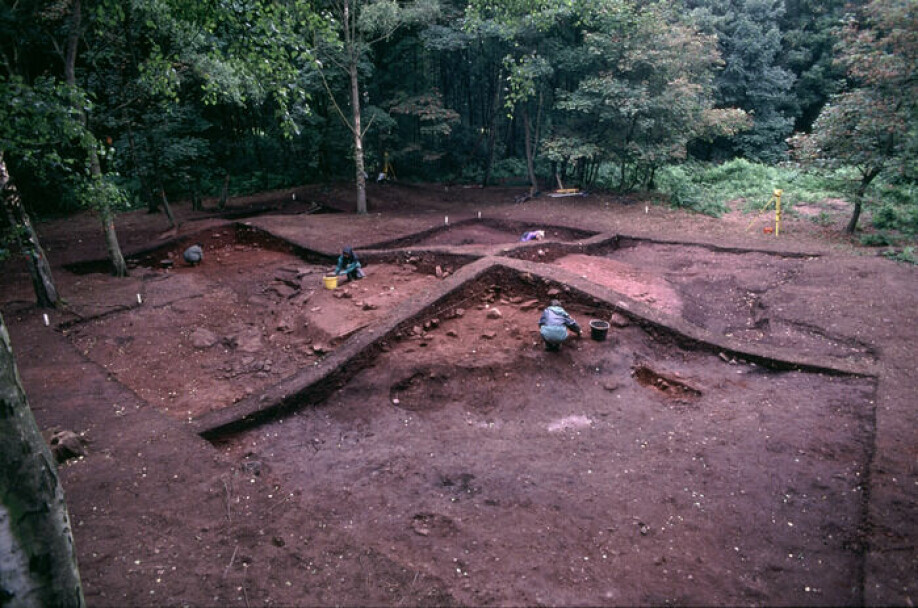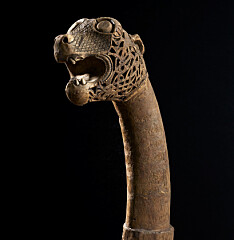
The Vikings likely brought horses and dogs with them on their voyages to England
“Very nice to get some archaeological flesh on that bone,” says Professor Jan Bill.
The Heath Wood barrow cemetery is the only site in Britain where Viking Age burial mounds containing cremated remains have been found.
The remains of three people and some animals are the only biological material available for study. The people are thought to be two adults and a child. The child and one of the adults were found in a burial mound along with what researchers believe to be a horse, a dog and possibly a pig.
The site was first excavated between 1998 and 2000, but now researchers from Great Britain and the Netherlands have retrieved the remains of bones again. Modern technology has made it possible to learn more from them.
Warriors in winter camp?
The researchers have linked these bone remains to the Great Heathen Army, also known as the Viking Great Army, a group of warriors that invaded Britain in the year 865.
The army is said to have wintered in Repton in central England between 873 and 874.
The researchers behind the study believe that the remains they have examined may originate from this particular winter camp. The Heath Wood barrow cemetery is just a few kilometres from Repton.
The new research was recently published in the academic journal PLOS One.

Fleshing out the archaeological finds
Analysis' show that the animals came from Scandinavia, as did one of the adults from the burial mound. The child and the other adult are probably of local origin.
This is the first reliable evidence that the Vikings sailed across the North Sea with horses and dogs, according to the researchers.
“Exciting reading,” said Jan Bill, a professor of archaeology at the Museum of Cultural History in Oslo.
He says there has been a lot of discussion about when people started taking horses on ships from Scandinavia to England.
“But it’s perfectly reasonable that it was possible in the 860s or 870s, I think. So it's really nice to get some archaeological flesh on that bone,” he said.
Modern technology provides new answers
Bill says it’s quite possible that this is the first tangible evidence that horses, dogs and perhaps pigs were transported from Scandinavia to Britain this early in the Viking Age.
The researchers examined strontium isotopes in what was left of the charred remains. Strontium is an element found all over the world, but in different varieties or blends. These variants are called isotopes.
Strontium is taken up and stored in the body right from childhood. People consume it through water, vegetables and plants. If you grow up in one place, you absorb the isotopic mixture found there; if you move to another place, you slowly start to absorb the mixture that is in the food there.
This dating method was first used by researchers in 2015, Bill said. Before that, experts didn’t think it was possible to measure strontium isotopes in burnt bones.
These kinds of measurements only provide a number for the mixing ratio between different isotopes for the object being investigated. Completely different places can have the same mixing ratio and thus provide the same value, Bill said.

Lots of evidence of Scandinavian origin
“We can't determine with 100 per cent certainty that this man was from Scandinavia,” Bill said of the strontium measurement.
The researchers also have to consider the other things that were found as well.
And there is a great deal of evidence that suggests a Scandinavian origin.
“It’s a cremation grave. They didn't do that in England at that time. There are Scandinavian objects and a burial mound. There’s a lot of evidence that this was not an Anglo-Saxon funeral,” Bill says.

Common to find animals in graves
The research team believes the findings show that the animals meant a lot to the Vikings.
They believe the animals were sacrificed to be buried with their owners.
The custom of burying dogs and horses in graves was quite normal in Sweden and Norway, Bill said. The pig could be explained as a kind of snack for the journey to the afterworld.
“The fact that there are bones from food animals in the graves is quite common. We assume that it was so that deceased would have something to eat on the journey,” Bill said.
Small war horses
But how was it possible for there to be room for horses on the ships, with all the crew on board? Bill says it was entirely possible, practically speaking, to make it happen. The Vikings might have only transported one or two horses at a time. Additionally, these horse probably took up a little less space than the horses we’re familiar with.
“The Viking-era horses were not the size of most horses today,” Bill said.
The war horses from the Middle Ages were perhaps more the size of ponies, according to a study published in 2021.
Not just warriors
It struck Bill a little that this burial mound was located some distance from the central part of the winter camp for the army.
“But having different burial grounds with different burial customs in the same area is something we’re familiar with from trading places dating from the same period,” Bill said. One example is the Kaupang in Skiringssal, in today's Vestland country.
Bill also finds the child in the grave interesting. It suggests that there were more than just warriors who had set up winter camp.
“It seems that there was a society with men, women and children,” he said. This also corresponds well with what archaeologists have found there in the past.
The possible pig remains also suggest the same situation.
“This all fits well with the picture that this was a much more mixed gathering than we once imagined,” Bill said. He thinks these people may have been a family who were prepared to live abroad for a long time. That's why they brought livestock.
Bill says that this grave does not necessarily have to date from when the Viking Great Army overwintered in the area. It could also date from colonization of the area afterwards. The dating technique is not precise enough to discriminate between these times, he said.
Translated by Nancy Bazilchuk
Reference:
Tessi Löffelmann et.al.: Sr analyzes from only known Scandinavian cremation cemetery in Britain illuminate early Viking journey with horse and dog a cross the North Sea. PLOS One, 2023.
———
Read the Norwegian version of this article on forskning.no





































